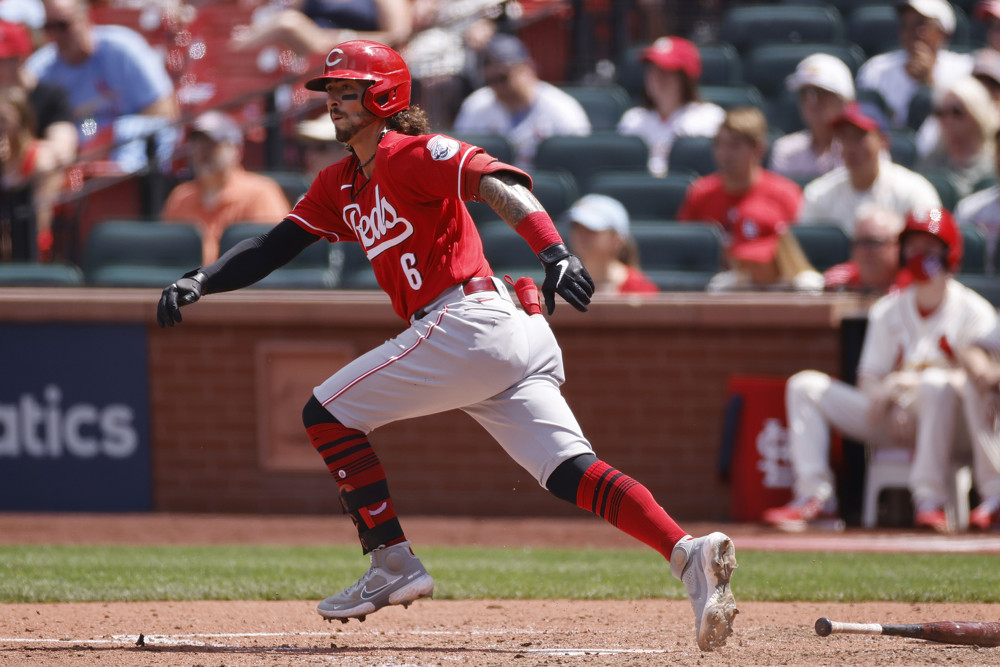
Well, its been an interesting trip, my friends. After setting sail several months ago into the ocean of MLB, the Red Sparrow has had quite the journey. As this maiden voyage comes to a close, it’s time to review India’s full season.
And my oh my, what a season it has been.
Similarly to the Reds, he got off to a sizzling hot start before regressing mightily. Once he adjusted to the league, he generated consistently above-average production and showed an elite ability to get on base, solidifying his spot as the leadoff hitter. Coming down the stretch, many have pegged him as the frontrunner for National League Rookie of the Year. If he wins, he will be the first Red to win the award since Scott Williamson in 1999.
So, as the season comes to a close, let’s review what he’s accomplished in his rookie year and see what we might reasonably expect from him in the future.
Outcome Stats
Jonathan India has had quite the rookie year. Over the span of 139 games, he’s hit .267/.377/.454 with an OPS+ of 112. According to FanGraphs, India has generated 3.7 Wins Above Replacement and a stellar 121 wRC+.
One interesting analysis of India involves looking at his month to month splits with OPS and his barrel rates.


For the early months of the season, India’s OPS was below .700. But once he began barreling the baseball better and being more selective at the plate, his numbers took off. While he’s been great this year, he was MVP caliber in July where he hit .319/.470/.527.
Much of this change took place when India was moved to the leadoff spot. Prior to hitting in the leadoff spot, India’s walk-to-strikeout ratio was 0.52. Once he moved to the top of the order, that ratio changed to 0.65 through July. He’s shown slight regression since then, but the talent demonstrated is elite. Since moving to the top of the lineup, he’s swinging at fewer pitches out of the strike zone — his chase rate was 25.9% before he moved to leadoff and 24.6% after — and swinging less in general (42.3% swing rate pre-leadoff, 37.8% post-leadoff).
Here’s what his swing chart looked like before (left) and after (right) moving atop the Cincinnati lineup:

He’s swinging less in every area of the strike zone except for one: right down the middle.
India has waited for pitches he can handle and hit them with authority. His exit velocity by zone also demonstrates this:

India is also one of the few Reds who has been able to post solid numbers against both righties and lefties.

While his batting average is lower against RHP, he’s still managed to be an effective hitter. His ability to get on base, no matter who is on the mound, is one of the most valuable aspects of India’s game and has directly contributed to his ability to help create runs.
So what drove this level of success?
Line drives and walks.

Early in the season, India struggled with plate discipline and hitting the ball in the air. However, as the season progressed, he advanced in both of these metrics. Prior to moving to the leadoff spot, India’s walk rate was above average (10.6%), but it’s jumped even higher at the top of the order (11.8%). His line-drive rate has risen from 16.3% to 23.4%, and his ground-ball rate has fallen from 50.0% to 43.7%. And the home runs have started to come with it. Of India’s 20 home runs, 14 have come since the All-Star break.
It’s clear to see why so many analysts have pegged India as the front-runner for Rookie of the Year. He’s had quite the season and deserving of the award.
But can we expect him to continue at this pace?
Looking to the Future
Let’s look at how the Red Sparrow stacks up against his fellow MLB players.

There’s a lot to like here. There’s also room for improvement. So far, the majority of India’s value has been generated by his ability to get on base. He’s shown elite plate discipline, scoring in the 79th percentile in walks and the 88th percentile in chase rate. He is also capable of hitting for decent power, as shown by his maximum exit velocity metric. For the year, his hardest hit ball clocked in at 110.2 MPH.
He’s struggled to generate consistent power, however, scoring low in both average exit velocity and hard hit percentage. Some of this is skewed by his cold stretch in the first quarter of the season, in which his hard-hit percentage was in the 19th percentile. Even taking this into account, these metrics show an obvious area for improvement. India also has somewhat elevated strikeout and whiff rates, which could be another area to work on.
Conclusion
Jonathan India is an exciting player. He’s fun to watch and been a huge piece to get the Reds into the postseason discussion. India does have a few obvious areas to grow, but these areas are what should excite Reds fans most. As he continues to develop, it is reasonable to expect that he’ll hit the ball harder on a consistent basis. When India is mashing, he starts to look at awful lot like vintage Joey Votto. While it would be unfair to expect anyone to have the same level of consistency as Votto, Reds fans can be excited about what the future holds for the Red Sparrow.
Photo by Joe Robbins/Icon Sportswire



Love your insights on players and the games. India is a fun guy to watch and definitely in the running for ROY.